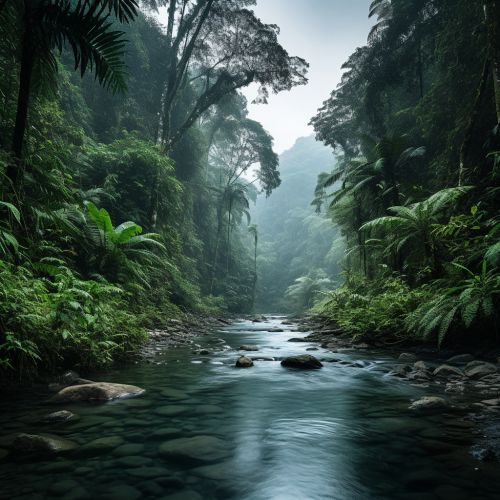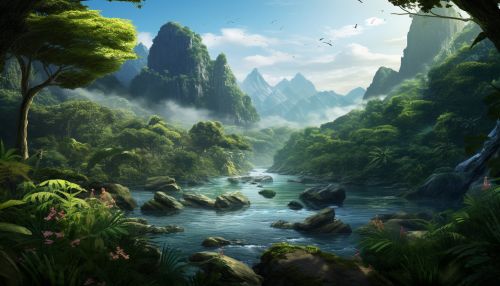Amazon River
Geography
The Amazon River is the second longest river in the world, and by far the largest by waterflow with an average discharge greater than the next seven largest rivers combined. It flows through nine countries: Brazil, Peru, Colombia, Ecuador, Bolivia, Venezuela, Guyana, Suriname, and French Guiana. The Amazon basin, the largest drainage basin in the world, covers about 40% of South America, an area of approximately 7,050,000 square kilometers.


Hydrology
The Amazon River has over 1,100 tributaries, 17 of which are longer than 1,000 miles. The most significant of these are the Madeira River, the Tapajós River, and the Negro River. The Amazon's waterflow is responsible for about 20% of the Earth's fresh water entering the ocean. The river's outflow is so strong that freshwater can still be tasted up to 100 miles out to sea.
Biodiversity
The Amazon River is home to a staggering array of wildlife. More than one-third of all known species in the world live in the Amazon Rainforest, including a wide variety of fish, mammals, birds, and plants. The river itself is home to the largest species of river dolphin, the Amazon River Dolphin, and the largest species of freshwater turtle, the Giant South American Turtle.
History
The Amazon River was named after the Amazons, a tribe of fierce women warriors who, according to Greek mythology, dwelt in Asia Minor. The first European to explore the Amazon, Spanish conquistador Francisco de Orellana, gave the river its name after reporting combat with tribes of female warriors, whom he likened to the Amazons.
Economy
The Amazon River is a major route for transport in the region, with riverboats carrying people and goods across long distances. Fishing is also a significant industry along the river, with many species such as the Pirarucu and the Tambaqui being important sources of food for local populations. In recent years, there has also been an increase in eco-tourism in the region, with visitors drawn to the river's stunning natural beauty and biodiversity.
Environmental Issues
The Amazon River and its surrounding rainforest are facing a number of environmental threats, including deforestation, pollution, and climate change. These threats not only endanger the river's unique biodiversity, but also the indigenous communities who depend on the river for their livelihoods. Efforts are being made to protect the river and its ecosystem, but these are often hampered by economic and political challenges.
